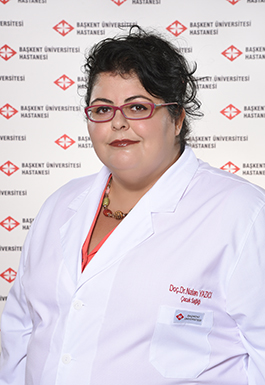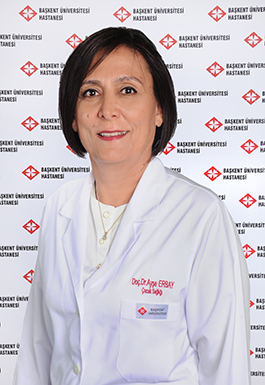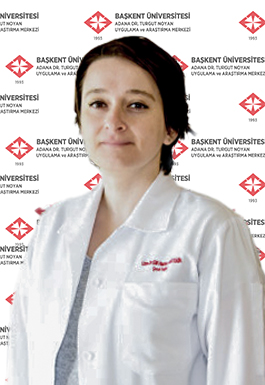In our department, the follow-up and treatment of cancer diseases seen in childhood are carried out under the supervision of experienced faculty members and healthcare personnel.
Our services are provided in the form of outpatient services such as daily examinations and outpatient treatments, and in cases requiring hospitalization, in a separate pediatric oncology service with four fully isolated rooms and a capacity of 16 beds.
Cancer diseases, rare in childhood, are treated in our hospital with a "multi-disciplinary" oncological patient follow-up concept, involving departments such as:
- Pediatric oncology
- Pediatric surgery
- Radiation oncology
- Pathology, radiology
- Nuclear medicine
- Neurosurgery
- Orthopedics
- ENT, and ophthalmology
Our facilities include experienced nursing services, equipped pediatric intensive care, a comprehensive blood bank, and emergency service support care options.
The Department of Pediatric Oncology at Başkent University in Ankara started actively seeing patients in February 2007. Over the years, it has reached a considerable patient capacity in the region and serves as a significant pediatric oncology center in the Eastern Mediterranean and Southeastern Anatolia, judging by the number of patients it sees annually.
Frequently seen diseases in childhood at our hospital include:
- Leukemia
- Brain tumors
- Lymph node cancers (Hodgkin and Non-Hodgkin lymphoma)
- Tumors originating from the kidney and adrenal gland (Wilms tumor, neuroblastoma)
- Bone tumors (osteosarcoma, Ewing's sarcoma)
- Cancer types involving soft tissue (rhabdomyosarcoma and other sarcomas)
Diseases that increase tumor risk, such as neurofibromatosis, tuberous sclerosis, autoimmune diseases, and immunodeficiencies, anemia and other blood cell (platelet, leukocyte) deficiencies or excesses, genetic and hereditary anemias such as thalassemia and sickle cell anemia, and pre-pregnancy counseling services for these diseases, bleeding disorders, coagulation disorders, and enlarged lymph nodes are evaluated, diagnosed, and treated.
Infantile vascular tumors, which appear in infancy and can grow rapidly, including hemangiomas (birthmarks, rose, etc.) are diagnosed and effectively treated early.
Diagnostic Methods Used in Our Department
All radiological examinations used in the diagnosis and assessment of the extent of childhood cancers (such as computed tomography, MRI, bone scintigraphy, MIBG, octreotide scintigraphy, nuclear medicine examinations, PET/CT) are performed in our hospital. These examinations are conducted quickly and specifically for children (if necessary, using mild anesthesia to ensure image quality and alleviate the child's fear during the examination).
Surgical and needle biopsy procedures necessary during the diagnostic phase are performed following joint decisions by the relevant departments.
In our department, bone marrow examinations and spinal treatments for our children are carried out under anesthesia without causing pain.
Treatment Methods
- The treatment of malignant diseases with chemotherapy, radiotherapy, and surgical treatments is managed by a team of specialist doctors and nurses.
- Our center closely follows the latest developments in vascular tumors and has been one of the first centers worldwide to implement a new drug treatment in this field.
Scientific Activities
Weekly pediatric oncology councils are regularly held every two weeks on Fridays from 12:30 to 14:00, with the participation of pediatric oncology, radiology, neuroradiology, pathology, radiation oncology, nuclear medicine, pediatric surgery, and related surgical branches.
- The "Infantile Hemangiomas with Propranolol Treatment" study is currently ongoing by the Department/Division.
- Symposia and workshops organized by the department/division include:
The "Kidney Tumors" symposium was held in 2010 at the Adana Practice and Research Center.
The "1st Eastern Mediterranean Neurocutaneous Diseases Days Tuberous Sclerosis Complex Symposium" in collaboration with the Turkish Neurology Association and Başkent University Pediatric Neurology Department was held on December 4-5, 2015, at Başkent University Medical Faculty Adana Dr. Turgut Noyan Practice and Research Center.
The "2nd Eastern Mediterranean Neurocutaneous Diseases Days Neurofibromatosis Symposium" in collaboration with the Turkish Neurology Association and Başkent University Pediatric Neurology Department was held on September 29-30, 2017, at Başkent University Medical Faculty Adana Dr. Turgut Noyan Practice and Research Center.
The "Prof. Dr. Namık Çevik Medulloblastoma Symposium" was held on June 14-15, 2019, at Başkent University Medical Faculty Adana Dr. Turgut Noyan Practice and Research Center.
Frequently Asked Questions
- Is cancer common in childhood?
Cancer is not common in childhood. It occurs at a rate of 110-150 per million children under the age of 15 annually. However, due to its rarity, the disease can be overlooked in places lacking experience in this area, leading patients to present at advanced stages.
- How do childhood cancers present symptoms?
Childhood cancers, being embryonal tumors, can present with symptoms and signs affecting almost any region and can mimic any disease. The most common complaints due to leukemias, the most common malignant diseases in children, include paleness, bruising on the body, fever, persistent infections, bone pains that wake the child at night. Tumor glands can present with glands and masses in the body, especially in the neck. Brain tumors may present with morning vomiting, headaches, seizures, eye drifting, imbalance, walking disturbances; abdominal tumors with pain, vomiting, bloody urine, constipation. Bone and soft tissue tumors generally present with pain and swelling.
- What should be considered during chemotherapy?
Nausea, loss of appetite, vomiting: Often seen during treatment to varying degrees and severity, depending on individual factors and may also be psychogenic (unwillingness to receive treatment, hospitalization, etc.). Anti-emetic medications are regularly used during treatment, and vomiting that occurs later or continues after discharge can disrupt fluid balance. Contact with the doctor is necessary.
Hair, eyebrow, eyelash loss: The least significant side effect, which fully recovers within months after the treatment is completed. It can be permanent in areas within the radiotherapy field.
Infection: Chemotherapy can lower the immune system and white blood cell count, making patients more susceptible to infections. Contact with sick people should be avoided during these times (chickenpox, measles, mumps, flu, etc.). Patients should wear masks in crowded and enclosed spaces.
Bleeding: Platelet (white blood) count decreases can occur during or after treatment, manifesting as bruising on the body, and bleeding from the mouth, teeth, nose, urine, and stool. Immediate consultation with a doctor is necessary in such cases. No surgical intervention should be performed without the knowledge of the attending doctor.
Liver, heart, kidney, and nervous system side effects: All medications, including aspirin, have various side effects depending on individual factors. Chemotherapeutic drugs, designed to kill cells and excreted through the kidneys and liver, can have various side effects. Chemotherapy is especially the only treatment option for certain types of oncological diseases. Patients are regularly monitored clinically and in the laboratory for these side effects.
Vascular access problems: Patients receive both chemotherapy (cancer) treatment and blood products, nutritional and serum therapies through vascular access. Over time, inevitable damage, medication leaks, and skin ulcers can develop in the vascular access, or superficial vascular access may become unusable. In such cases, the insertion of devices called catheters for deep vascular access may be necessary.
Vaccinations: Live vaccines are not administered to patients receiving chemotherapy (polio, measles, rubella, mumps); also, if oral polio vaccine drops are given to siblings of these children during their treatment, these children should not stay in the same house with the patient for some time.
- How long is the chemotherapy treatment duration?
It varies depending on the type of disease. While some types of leukemia can extend up to 3 years, some lymph node cancers can be as short as 4-6 months.
- Is the frequency of cancer increased in my other children?
Except for familial cancer syndromes and some groups of cancers where genetic mutations are inherited, the risk for other children is the same as for other children in the community.


